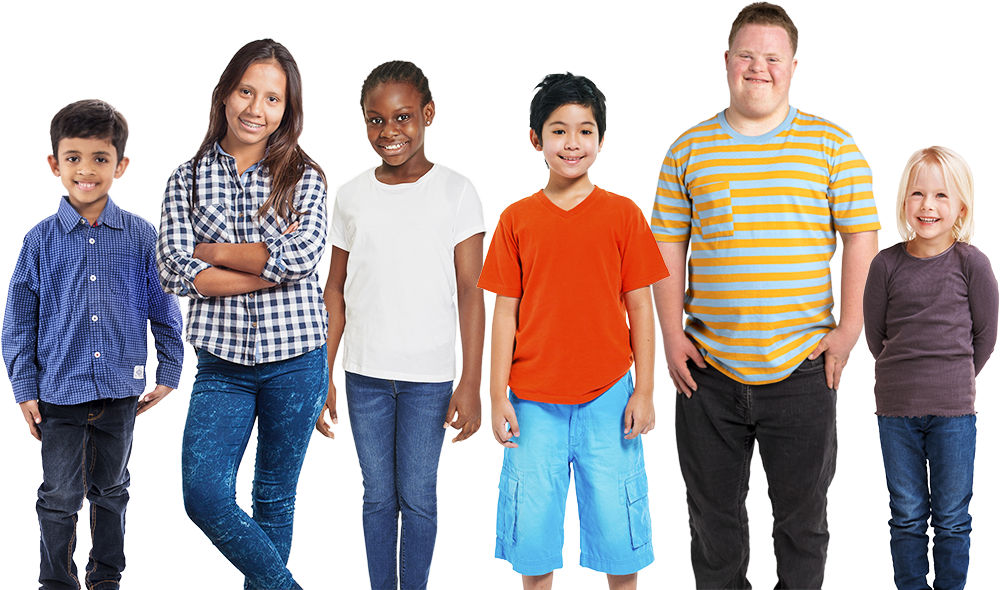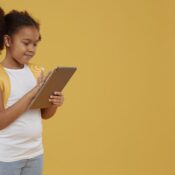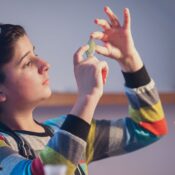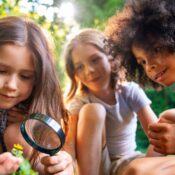Funding Diverse Spaces for Differentiated Learning
Schools are vibrant ecosystems, far beyond the confines of classrooms, where students have the freedom to grow, explore, and flourish in a variety of enriching environments. Beyond the traditional classroom, diverse learning spaces such as libraries, science labs, and music rooms play a crucial role in fostering creativity, collaboration, and a passion for discovery. These spaces are integral to differentiated learning — a teaching approach that tailors instruction to meet the unique needs of every student — and they empower educators to engage students with diverse interests and abilities.
Yet, despite their significance, these areas often struggle for funding, leaving educators and communities to fill the gaps. In fact, a study by the Albert Shanker Institute found that nearly 80% of states allocate significantly fewer resources to their K-12 schools than they did before the 2007-09 recession, costing schools over $360 billion in much-needed funding between 2016 and 2021. This funding shortfall underscores the urgent need to support these environments, and TeacherGiving offers an innovative way to make a meaningful difference.
The Importance of Diverse Learning Spaces for Differentiated Learning
Every corner of a school holds the potential to inspire, nurture growth, and unlock a student’s unique passions. Diverse learning spaces create environments where differentiated learning can truly thrive. By embracing variety, flexibility, and innovation, these spaces enable educators to meet students where they are, helping every child grow in their own way.
Differentiated learning is about recognizing that every student learns differently and tailoring instruction to meet those needs. Diverse spaces like libraries, labs, and music rooms are essential in making this approach not just a concept but a reality. Let’s explore how these spaces foster engagement and encourage all learners to flourish:
Libraries: Gateways to Knowledge and Imagination
Libraries are far more than just places to borrow books; they are hubs of learning and exploration. By providing access to physical and digital resources, libraries invite students to explore topics that fascinate them, encouraging independent thinking, curiosity, and a lifelong love of learning. Whether they’re working on a research project, teaming up with classmates, or simply getting lost in a book, libraries support all kinds of learning styles.
Modern libraries have adapted to include maker spaces equipped with tools like 3D printers and coding kits, offering hands-on learning opportunities that appeal to kinesthetic learners. These innovations make libraries adaptable to a variety of educational needs, from STEM-focused projects to creative arts. Whether exploring technology, experimenting with art, or diving into new ideas, libraries provide a flexible environment for students to learn at their own pace.
In every way, libraries are essential learning hubs that nurture creativity, collaboration, and a passion for knowledge that lasts a lifetime.
Science Labs: Where Curiosity Sparks Innovation
Science labs are where theory comes to life, allowing students to dive into hands-on experiments and problem-solving. These spaces encourage active learning, giving students the opportunity to explore, hypothesize, and innovate. By working together on experiments, students with different strengths can contribute to the success of the group, making science labs an ideal environment for differentiated learning.
In the lab, students not only grasp scientific principles more effectively, but they also develop essential skills like critical thinking and collaboration. Modern labs, equipped with technology such as virtual reality (VR) simulations, take the learning experience even further by making complex concepts more accessible to all students.
Music Rooms: Cultivating Creativity and Collaboration
Music rooms are creative spaces where students can express themselves through sound. These rooms foster collaboration, discipline, and emotional growth. Whether playing an instrument, composing music, or singing in a group, students learn to work together while developing their unique talents. Music education nurtures emotional intelligence and builds a sense of community, both of which are key elements of a well-rounded learning experience.
Equipped with a variety of instruments and recording technology, music rooms can accommodate students of all skill levels, ensuring that everyone has the opportunity to participate. Through music, students improve their academic performance, social skills, and self-confidence, all while cultivating a deeper understanding of themselves and others.
Outdoor Learning Spaces: Expanding the Classroom
In addition to libraries, labs, and music rooms, outdoor learning spaces are increasingly recognized for their educational benefits. School gardens, outdoor classrooms, and nature trails offer unique opportunities for hands-on learning. These spaces allow students to connect with their environment, deepening their understanding of nature and ecological principles.
Outdoor learning has been shown to improve student focus, reduce stress, and boost creativity. For example, a school garden can serve as a living classroom, where students learn biology, nutrition, and even mathematics through activities like planting seeds, measuring growth, and observing ecosystems in action. These outdoor spaces enrich the learning experience, helping students engage with the world around them in meaningful ways.
Challenges in Funding Diverse Learning Spaces
Despite their importance, many learning spaces such as libraries, labs, music rooms, and outdoor classrooms often lack adequate funding. Tight budgets force schools to prioritize core classroom needs, leaving these specialized spaces under-resourced. As a result, students miss out on valuable experiences and tools that are essential for a well-rounded education, limiting opportunities to ignite passions, build skills, and prepare for future success.
Unequal Access to Resources
The challenges are even more significant in underserved communities. Schools in these areas face greater funding disparities, often due to property tax-based funding models exacerbating inequities. These schools are less likely to have up-to-date libraries, functional science labs, or sufficient music equipment, putting students at a clear disadvantage.
The Impact of Obsolete Facilities
Outdated or poorly maintained facilities further hinder the effectiveness of diverse learning spaces. A library without internet access or a science lab with broken equipment fails to meet modern educational standards. Teachers are left struggling to adapt, and students miss out on critical learning opportunities that could enhance their education.
How TeacherGiving Can Help
TeacherGiving is a educator funding platform designed to bridge the gap between what schools need and what their budgets allow. By empowering educators and communities to raise funds for essential learning spaces, TeacherGiving can help ensure that all areas of a school receive the attention and resources they deserve. Here’s how it works:
- Tailored Campaigns: Teachers can create customized campaigns, focusing on specific needs like upgrading library collections, purchasing new lab equipment, or improving music room resources. These campaigns provide complete transparency, showing supporters exactly where their contributions are going.
- Community Support: Parents, alumni, local businesses, and community members can contribute securely through the platform, knowing their funds will make a direct impact on the learning experience. This collective support helps bridge the gap between what’s needed and what’s possible.
- Quick and Accessible Funding: TeacherGiving’s streamlined system ensures that funds are quickly accessible. This simplicity and speed help educators make a difference in their students’ lives without major delays.
Through community support, TeacherGiving helps ensure that every diverse learning space — both inside and outside the classroom — gets the attention it deserves, empowering schools and educators to create learning environments that inspire and support all students.
Real Stories, Real Impact
Just imagine the transformations that can take place when a middle school library gains new digital tools, expanding access to learning for all students. Or picture a music room receiving the funding it needs for new instruments, opening the door for more students to try an instrument for the first time and join the school band. These aren’t just dreams — they’re the kind of changes that TeacherGiving wants to bring to life.
For example, a school could raise enough funds through TeacherGiving to revamp its outdated science lab, allowing students to conduct more complex experiments and better understand key scientific principles. In another case, a music teacher could replace aging instruments, allowing students to express themselves in a new way or perform at a higher level and deepen their connection to music. These are just some of the impactful changes TeacherGiving makes possible.
Creating a Future Where Every Student Thrives
Investing in diverse learning spaces has a ripple effect that extends beyond individual students. It enriches school culture, strengthens communities, and prepares a generation of learners to tackle future challenges. By supporting these spaces, we can help students reach their full potential.
Get Involved with TeacherGiving
TeacherGiving makes it easy to invest in the future of education. By contributing to campaigns, you’re directly supporting initiatives that empower differentiated learning and create opportunities for students of all backgrounds.
Visit TeacherGiving today to learn how you can make a difference in libraries, labs, music rooms, and outdoor learning spaces. Together, we can build schools where every space inspires growth and discovery.
Share:
Inspired by the TeacherGiving blog?
Discover resources, strategies, and stories that empower educators and transform classrooms. From fundraising tips to free downloadable tools, our blog is your go-to guide for innovative teaching and impactful learning. Subscribe today and never miss an update!
Recent Posts
12 States Lead Way in Providing Above Average Education
Navigating Digital Reading: Empowering Students in Internet-Based Learning
Unlock the Importance of Non-Classroom Learning Environments
End of the School Year Celebrations: Why They Matter

Be a Champion for Classrooms
Whether you’re an educator needing support or a supporter wanting to make a difference, TeacherGiving is here for you. Create an account or donate to help educators and enrich students’ learning experiences. Join us today and be a champion for classrooms!






